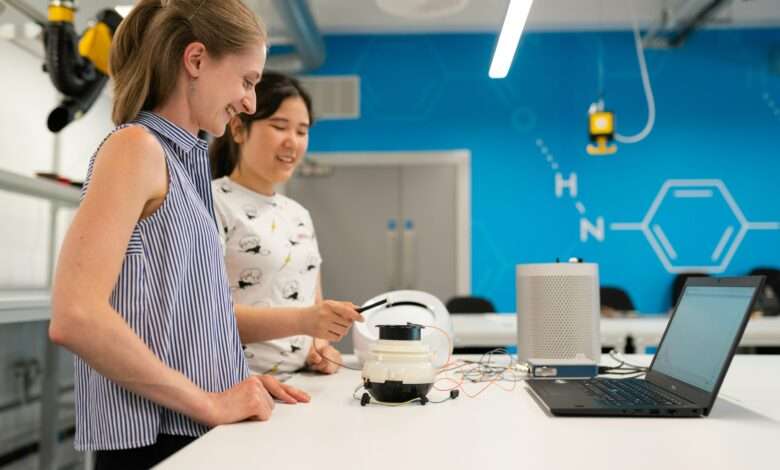Cross-Device Testing : Ensuring Seamless User Experiences Across Platforms

Introduction
In an increasingly digital world, users access applications on a multitude of devices—from smartphones and tablets to laptops and desktops. This diversity necessitates effective Cross-Device Testing to ensure consistent user experiences. As companies strive to meet user expectations, understanding the intricacies of it becomes essential. This article explores its importance, techniques, and best practices, ensuring a comprehensive understanding of it and its critical role in modern software development.
What is Cross-Device Testing?
Cross-Device Testing refers to the practice of validating the performance, usability, and functionality of applications across multiple devices and platforms. Given the myriad of devices available—each with unique operating systems, screen sizes, and resolutions—it is crucial for maintaining a consistent user experience. By simulating real-world usage scenarios, QA teams can identify issues and ensure applications work seamlessly across all platforms.
The Need for Cross-Device Testing
As users switch between devices frequently, applications must deliver a uniform experience. For instance, a user might start browsing a travel app on their smartphone, only to continue booking on their laptop later. If the application doesn’t perform consistently, it can lead to frustration and abandonment. It aims to mitigate such risks by validating that users enjoy the same functionality and experience, regardless of the device they choose.
Importance
Enhancing User Experience
One of the primary objectives of Cross-Device Testing is to enhance user satisfaction. By ensuring consistent functionality and interface design across all devices, companies can provide a frictionless experience. This includes everything from maintaining layout integrity to ensuring that navigation works as intended, regardless of screen size.
Expanding Reach and Accessibility
It enables businesses to reach a broader audience. When applications are verified to work on various devices, more users can engage with the product. This inclusivity is vital, especially as different demographics may prefer different devices. Companies that prioritize cross-device compatibility often see increased user engagement and retention.
Early Bug Detection and Resolution
Cross-device testing is crucial for identifying bugs that may only appear on specific devices or browsers. By replicating various user environments, QA teams can uncover issues that could disrupt the user experience. Early detection allows for timely fixes, reducing the likelihood of user complaints after launch.
Optimizing Performance Across Devices
Applications may behave differently depending on the device’s capabilities. Through it, teams can optimize performance by identifying how an application operates on low-end devices versus high-end ones. This ensures that all users, regardless of their device’s specifications, can enjoy a smooth and responsive experience.
Supporting Updates and Changes
With constant updates to operating systems and browsers, applications need to be tested regularly to ensure ongoing compatibility. Cross-device testing helps identify potential issues arising from these changes, allowing teams to adapt their applications promptly and maintain user trust.
Techniques for Effective Cross-Device Testing
Understanding Device Fragmentation
Before diving into testing methods, it’s essential to understand the fragmentation of devices in today’s tech landscape. Users access applications through a wide variety of platforms, each presenting unique challenges. A flexible approach to quality assurance is necessary to cover the extensive range of possible combinations of devices and environments.
Planning Comprehensive Test Scenarios
A well-structured test plan is vital for effective cross-device testing. QA teams should analyze usage data to identify the most common device combinations their users are likely to encounter. Creating representative test cases based on real-world usage patterns ensures thorough coverage across platforms.
Utilizing Device Labs
Device labs are crucial for it, allowing QA teams to test applications on a variety of physical devices. These labs provide high-fidelity environments for manual testing, enabling engineers to validate functionality and address any design inconsistencies. Combining device labs with cloud-based solutions can enhance testing efficiency and coverage.
Continuous Integration and Testing
Implementing continuous integration (CI) practices allows for regular cross-device testing throughout the development lifecycle. By incorporating automated tests for cross-device functionality and user interface checks, teams can catch compatibility issues early, streamlining the QA process and ensuring high software quality.
Responsive Design Testing
For web applications, validating responsive design is critical. Testing should involve inspecting layout, text resizing, and overall usability across different screen sizes. Automated tools can assist in generating visual reports to identify discrepancies in rendering across breakpoints, ensuring a consistent experience for all users.
Monitoring Post-Launch Performance
Once an application is live, ongoing monitoring is essential. Collecting data on user interactions and performance metrics can reveal unforeseen cross-device issues. Setting up automated tests in production environments helps catch bugs early, ensuring that the user experience remains consistent over time.
Best Practices
Prioritize User-Centric Testing
Focus on user experience when planning test scenarios. Understand the various contexts in which users will interact with the application and prioritize scenarios that reflect real-world usage. This user-centric approach will lead to more effective testing outcomes.
Use a Combination of Testing Methods
Relying solely on manual testing or automated testing can lead to gaps in coverage. A combination of both methods ensures that all aspects of the application are thoroughly evaluated across devices. Automated tests can handle repetitive tasks efficiently, while manual testing can address complex interactions.
Document and Analyze Results
Thorough documentation of test results is vital for future reference and improvement. Analyze patterns in defects to identify common issues across devices, informing future testing strategies and application updates.
Invest in Training and Tools
Ensure that your QA team is well-equipped with the latest testing tools and methodologies. Continuous education and access to advanced testing platforms can significantly improve the effectiveness of cross-device testing efforts.
Collaborate Across Teams
Encourage collaboration between development, QA, and UX teams. A holistic approach ensures that all aspects of the application are considered during testing, leading to a more robust final product.
Conclusion
In an era where users interact with applications across multiple devices, Cross-Device Testing has become an essential practice for ensuring seamless user experiences. By employing effective testing techniques and best practices, organizations can enhance user satisfaction, expand their reach, and optimize application performance. A commitment to it not only improves the quality of software but also builds user trust and loyalty. This article was prepared by the V Aiotechnical.com editorial team, emphasizing the importance of thorough testing in today’s digital landscape. Embracing it is not just a technical necessity; it’s a strategic advantage in delivering superior user experiences.





